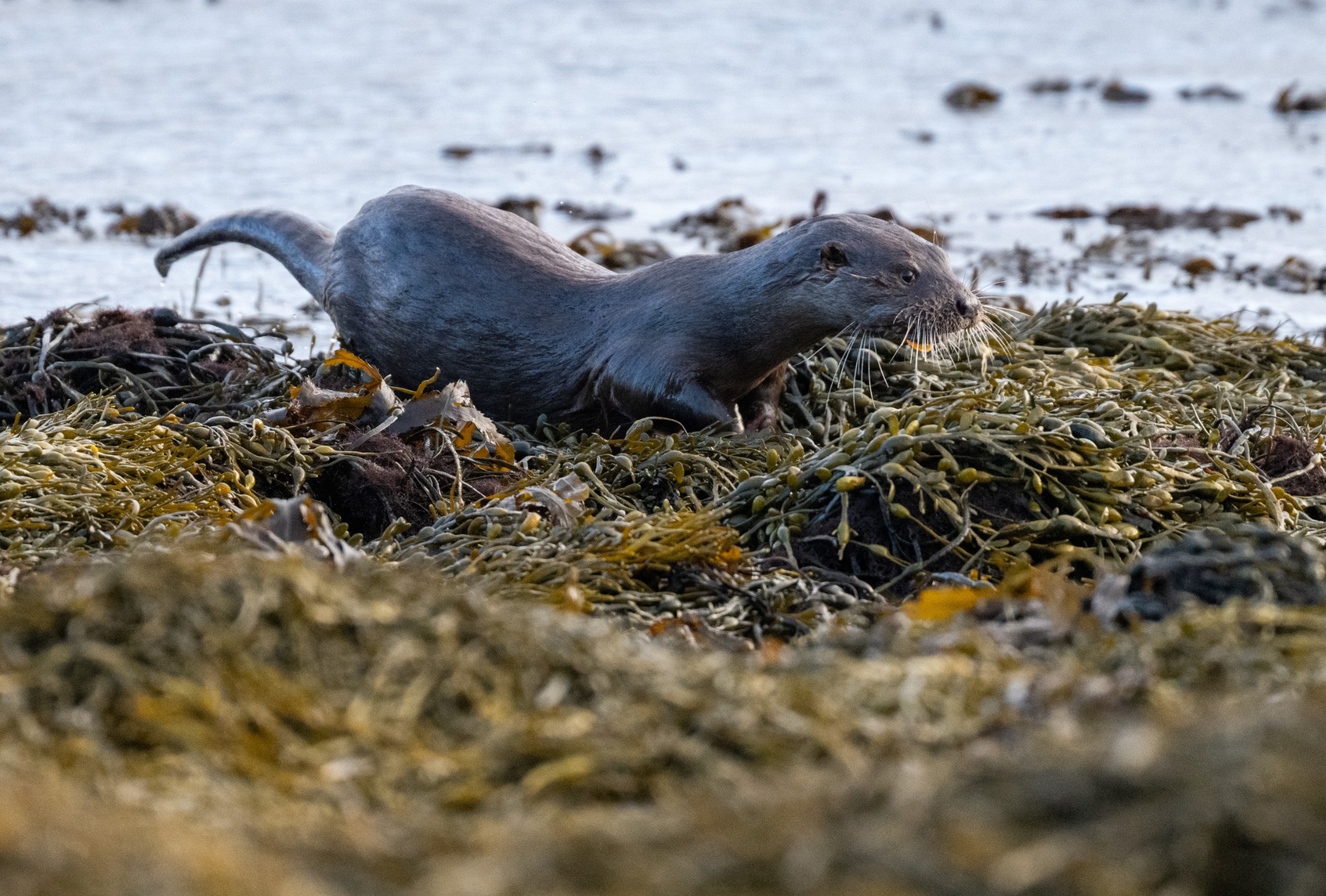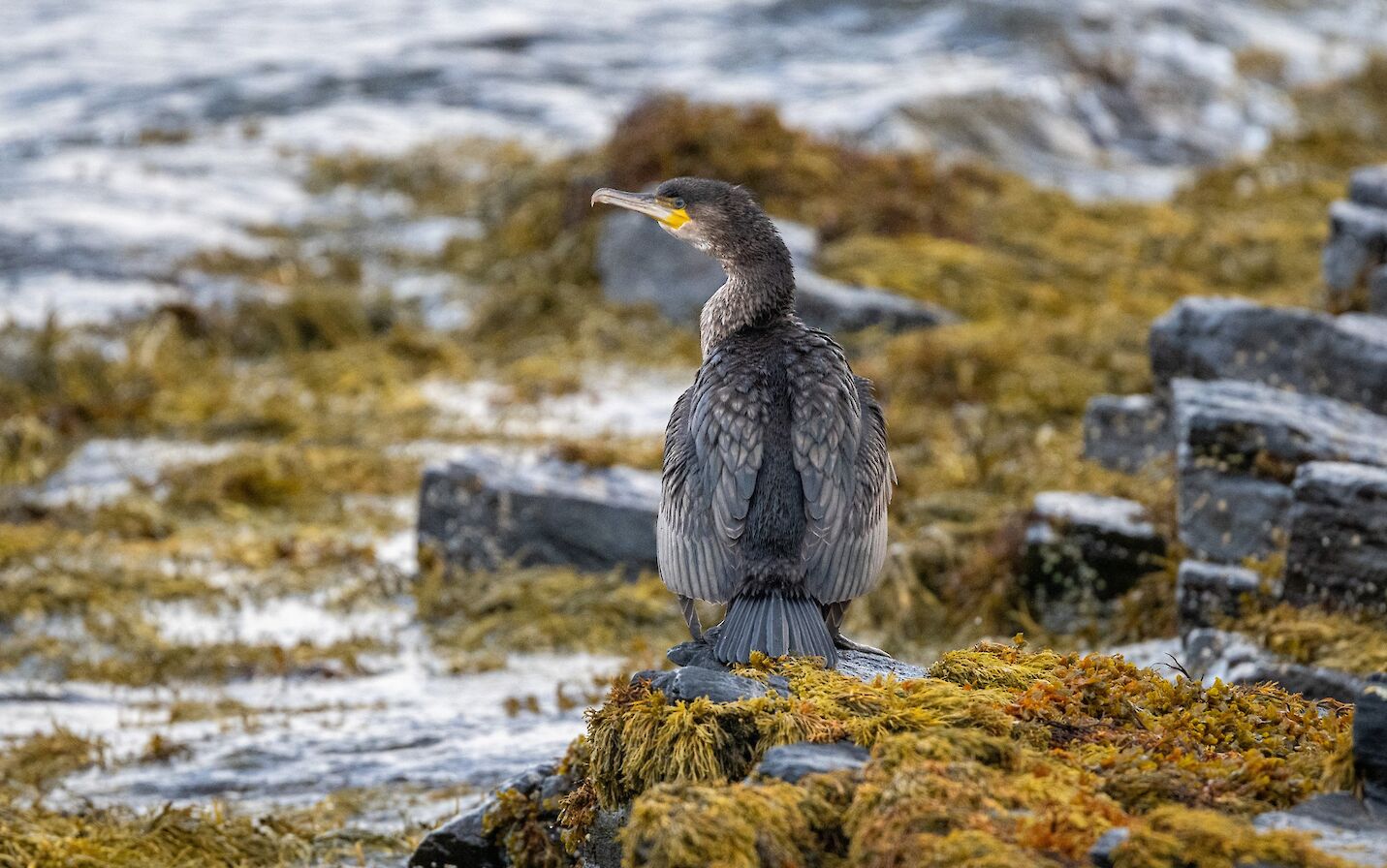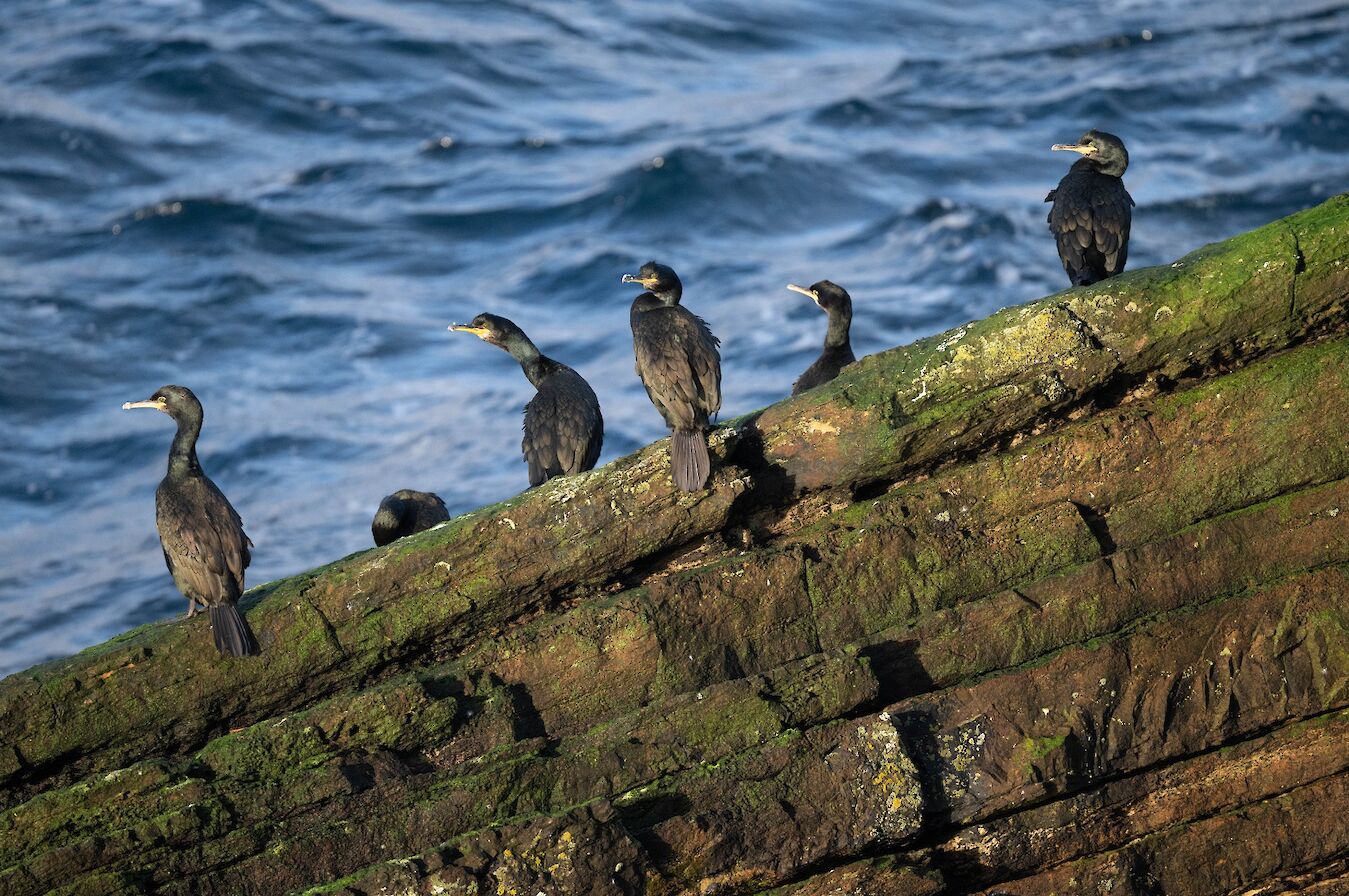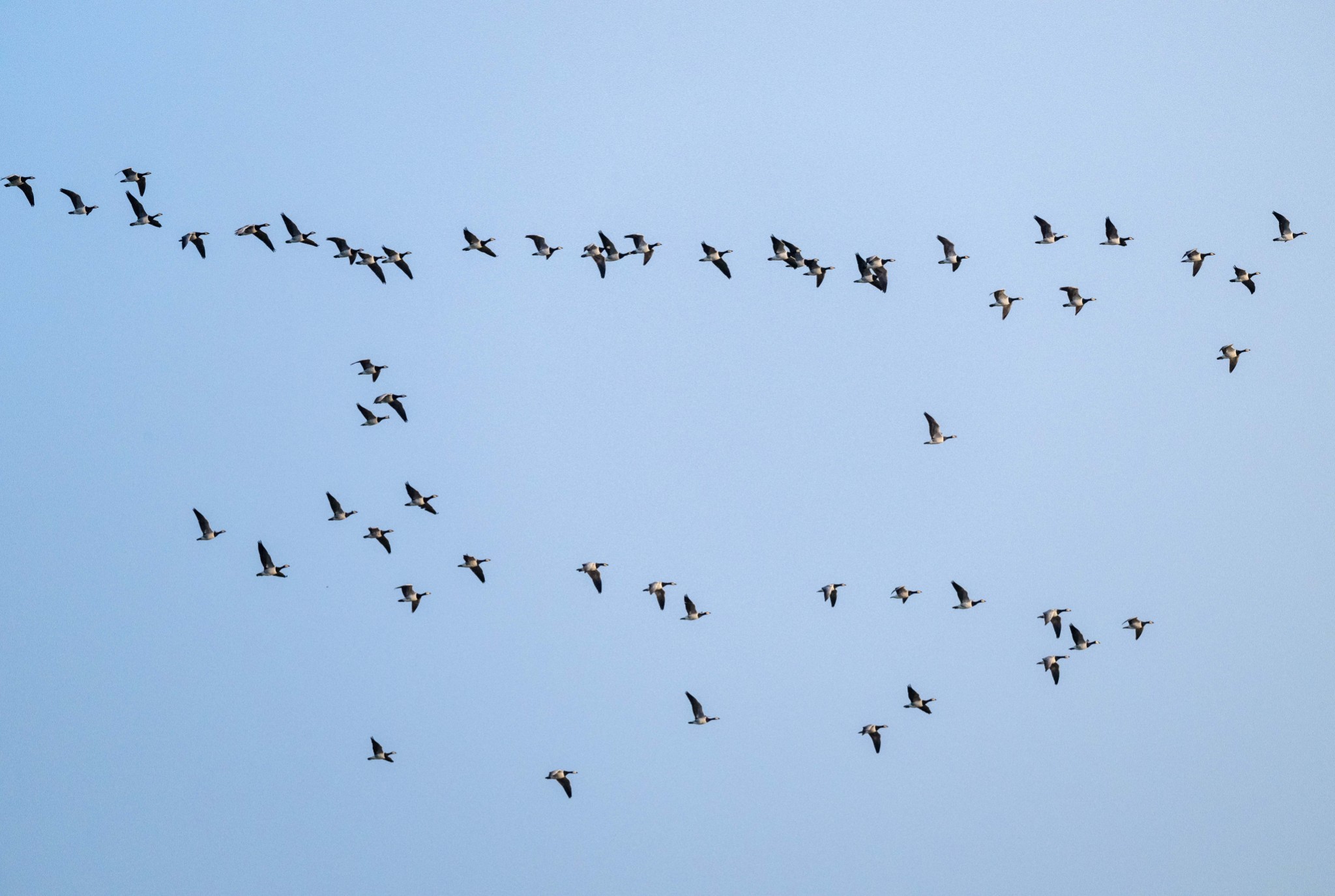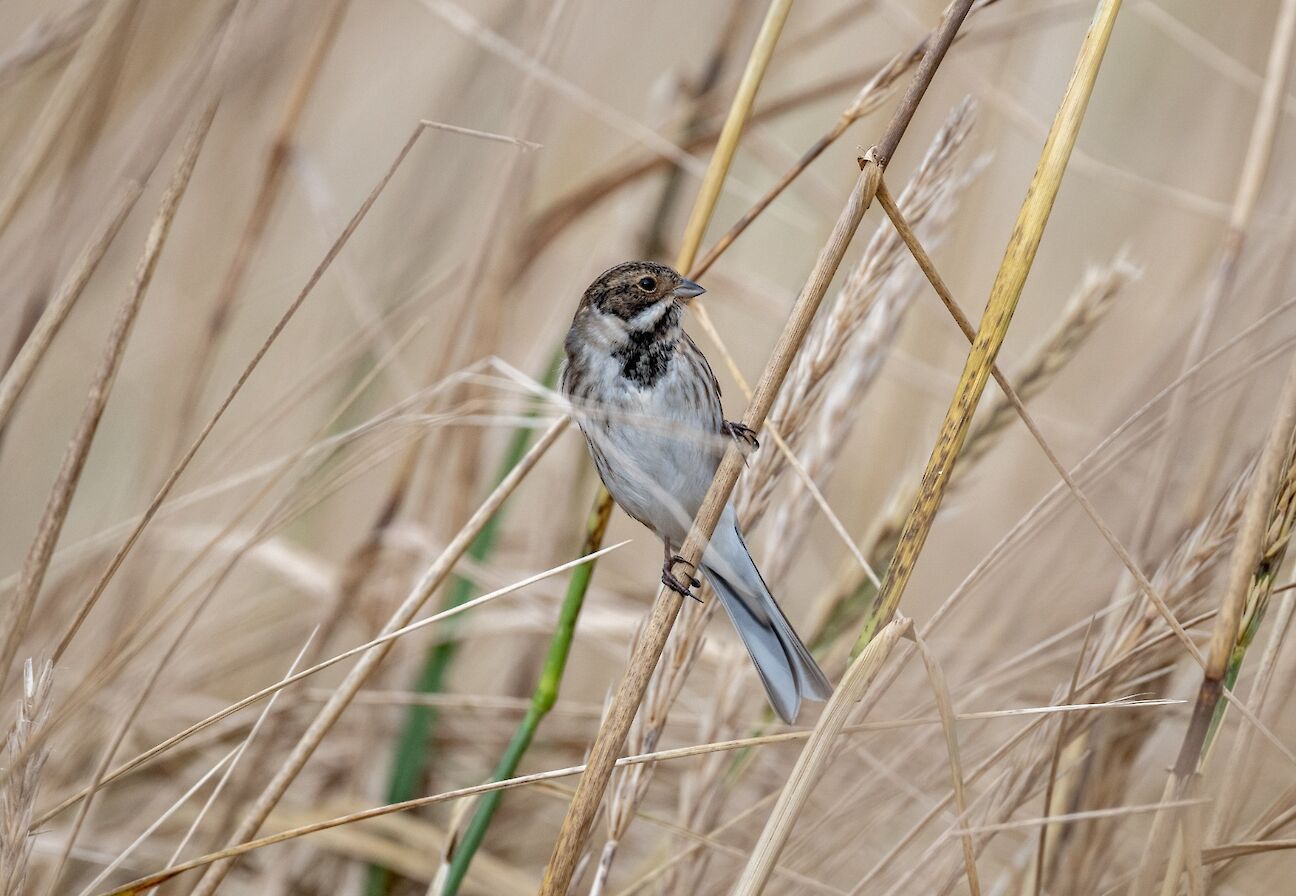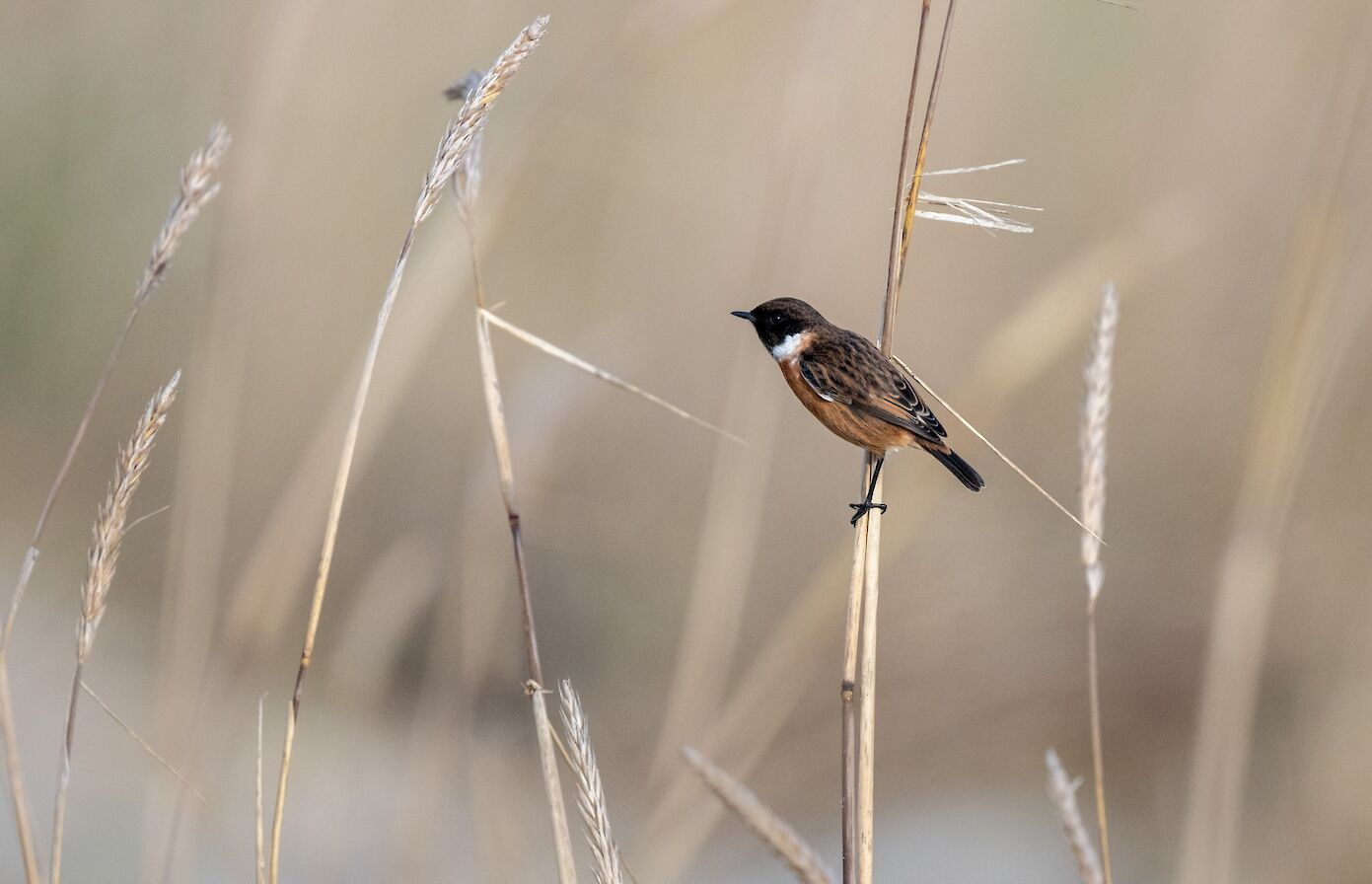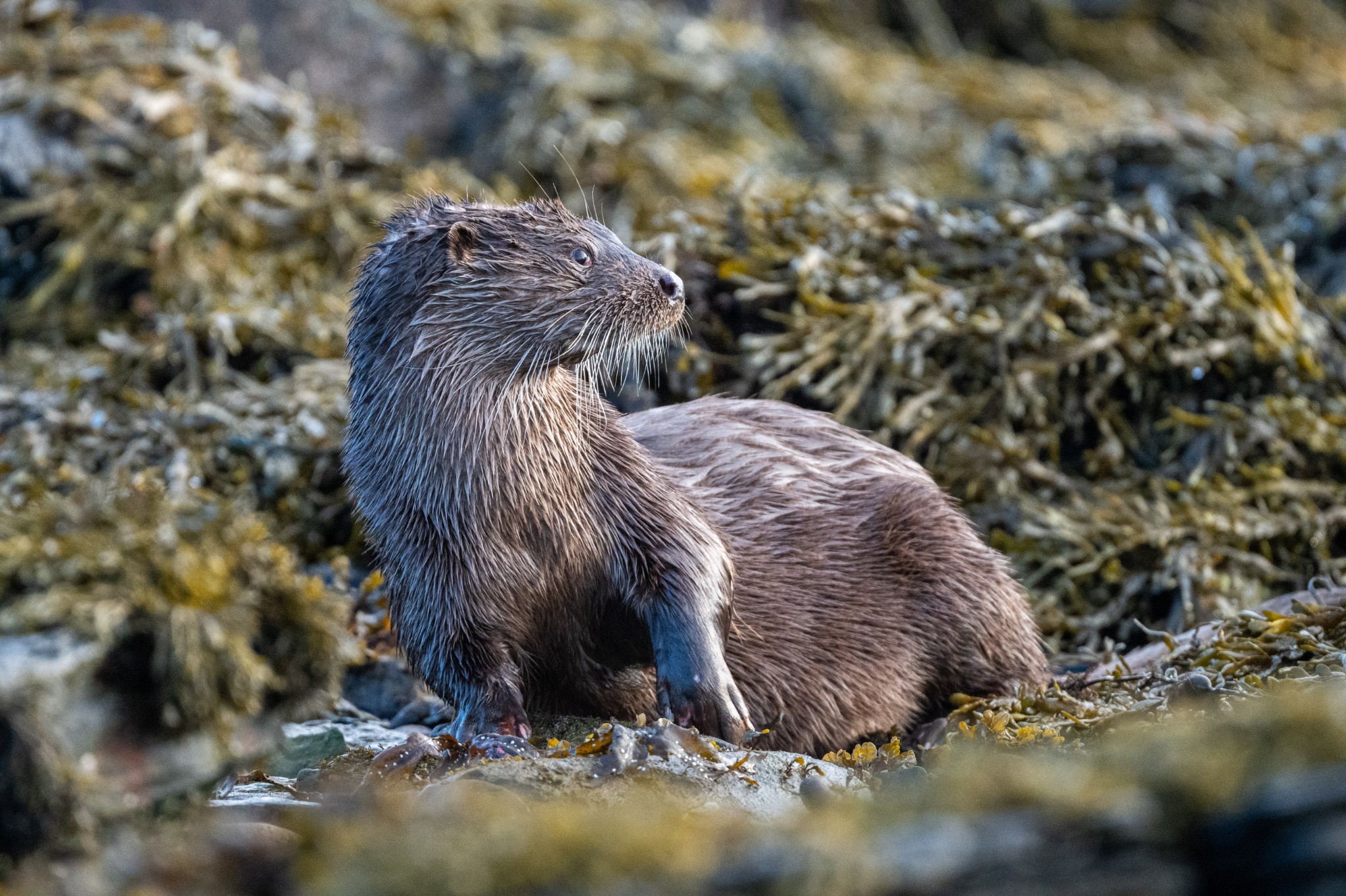Someone asked me recently how I stay motivated when it comes to taking photographs of wildlife. I don’t think there’s one simple answer, but the way I look at it is every image I make has presented some kind of challenge.
It means I’ve had to figure something out, either a technical challenge in terms of light, or equipment, or the weather has made life difficult, or conversely has presented an opportunity. I like that it’s rarely straightforward.
Over the course of a year, I’ll work in different ways. I’ve been focusing on a long-term project about grey seals that doesn’t have a home - it might become a book, it might not! The same goes for otters and because I know they’re such a difficult subject in Orkney I’m fairly relaxed about it. The work might bear fruit and become something interesting, or it might be a challenge too far.
Working on something like a book gives my photography a structure. I enjoy the research and planning element and so when you put that into practice and it works then it’s really satisfying. Then of course there are the moments of chance when an opportunity presents itself which you didn’t plan for, and those are great too.
I’m always scheming. I’ll see a bird when I’m on a dog walk and think ‘that would make a nice backlit image in late afternoon’, and it might not be until the following year that I try and put the thought into practice.
Variety keeps things interesting and that is the beauty of watching and photographing wildlife in Orkney. No two days are the same, there are endless combinations of different light created by different weather conditions and different states of the tide. With the seasons come different migrating birds, with the warming of the seas though the spring and summer come the profusion of different seaweeds and fish. There is plenty to be motivated by!
That said, on a dreich day with little light, I’m happy to allow myself a day drinking tea and binge watching some Scandi noir series.
Some days I’ll ‘just go out a look’ and that’s exactly what I did recently. I have a loose plan of sorts but if I get sidetracked by something more interesting then that’s fine too. My plan is to check the grey seal pups one last time in South Ronaldsay, to see if there are any waders at the Fourth Barrier beach, and if tide and time permit, I want to check a section of shore for otters.
I spot a great northern diver hunting in the shallows very close to shore at the first Churchill Barrier and so stop the car. I see it dive but when it surfaces it is an improbable distance away. These birds always seem to know when something is up and I’ve started to take it personally over the years that I’ve never managed to achieve anything close to a decent picture of one.
Chastened, I get back in the car but it isn’t long before I stop again. I make it over the hill on Lamb Holm and see a nice group of shags resting on the small pier. It gives me a chance to admire their scaled, dark bottled-green plumage. Granted it isn’t as bright and obvious as its summer plumage but it’s still there, as is the emerald green eye.
Not far from here is a section of shore called ‘scarfie rock’. A ‘scarf’ is the Orkney name for a shag and so this area has clearly been of importance to them over the years. I carry on but it seems this is a day of short stops. I see a cormorant on the shore of Glimps Holm and it’s a good chance to compare the differences between this bird and the shag, with which it is sometimes confused. It’s drying its wings as it rests on the rocks - neither bird has waterproof feathers despite both being underwater hunters and so both species can be easily seen with their wings outstretched.
It’s clear to see the cormorant is a more robust looking bird, altogether larger though a similar shape and long neck. The mere fact that it is here by itself is also a nod in the direction of the cormorant. Shags gather in large numbers during the winter in Scapa Flow whilst cormorants are more likely to be solitary. In Orkney’s north isles it is possible however to see long strings of these birds as they move between fishing grounds.
I finally make it to Burwick and start heading around the coast where I’ll perch on a high cliff-top and admire the selkies from afar. I love this bit of coast; the wide-open expanse of the Pentland Firth opens out before me and the sky is wild. It’s not that windy but it’s picking up and feels like it has swung around to the north. Mainland Scotland is framed by a bright silver line on the horizon and bands of rain or snow lurk underneath black clouds.
I hear a familiar noise from the north, the honking of geese, but when I raise my binoculars, the light catches them and I’m thrilled to see a skein of 200 or so beautiful barnacle geese. These are likely birds from Greenland and watching them makes me think of my time spent filming glaciers there for the BBC and how much more arduous their journey must have been.
The crying and wailing of selkies wakens me from my glacial dream and I carry on, pulling my snood up around my face, protecting me from the Arctic air brought by those barnacle geese.
It’s now well into the pupping season and most of the pups below me look like a chipolata ready to burst such has been their extraordinary growth rate. They lounge towards the top of the shore, a sure sign that they’ve been weaned. Some still receive the encouragement of their mother to suckle though I’ve always thought the method of encouragement must at time seem a little confusing. The mother will gently tap the pup with one of its front flippers as a sign to come and feed. Sometimes however the pup is already close to her when this happens and she often repeatedly hits it in the face, the pup flinching each time this happens.
I wish them good luck and head back to the car for a cup of tea, it will warm my frozen hands at least.
Heading back north I stop at the Fourth Barrier beach and as I walk through the dunes I scan the water’s edge for signs of sanderling. There are surprisingly few but I see small birds in front of me rise from the marram grass before descending again. I’m looking into the sun though and it’s very bright, making identification difficult. So, I walk along the beach to the south end and retrace my steps, tracking along the edge of the marram grass where it meets the beach.
A small flock of reed buntings flies up and bounces away in front of me. I’d love to get a picture of one but I don’t want to keep pushing them further along the beach in front of me, wasting their precious energy as I go. Another bird lands close by and it is much brighter than the muted colours of the reed bunting. With a dark head and bright rusty orange breast there is no mistaking this is a male stonechat, and how handsome he is.
This kind of habitat is messy in winter, but this is a good thing and one of the reasons the reed buntings are here. Dried-out vegetation is everywhere, and so the seeds of the plants have been spilled in the sand where the buntings are now feeding. They flit in and out of the tall stalks of the marram grass and my normally trusty auto-focus system struggles to lock on such is the movement of the grass.
I recently heard the call of the reed bunting described as that of a bored sound engineer; ‘One, two, check…one, two, check’. Accurate perhaps, but still rather harsh. Finally, a female shows herself and far from being boring, she’s perfect. Her subtle streaky plumage blends perfectly into her surroundings.
The day has caught up with me and so the chance of an otter will have to wait until tomorrow.
Normally I wouldn’t take people out to look for otters, primarily because I mostly don’t have the time to keep on top of where they are and so we could spend all day looking, or even all week looking, and not see one. However, a visiting French friend has already been very lucky to see golden eagle and orca on her trip and so sending her home with memories of an Orkney otter would be pretty special.
We start walking along the seaweed-strewn shore an hour before low tide and scan with binoculars. The wind only makes its presence felt further out to sea and so if there was an otter here, we would likely see it in these still conditions. The shore is a little exposed though and so wigeon and curlew see us coming a mile away. As they settle, we do too with a wide view of the bay in front of us and sit and wait. Every dark dot in the water is scrutinised, shag, harbour seal and something different, a Slavonian grebe.
We walk again trying to keep our feet on the now treacherous rocks which have been doused in sleet. That north wind shifts a little and now works in our favour should we see an otter. I scan ahead but no sign. Then all of a sudden, the rounded back of something moves in front of us, really quite close. An otter.
We stop still and I whisper that we must now move from rock to rock back to the bank behind us where we won’t stand out against the sky. Tip-toeing from stone to stone avoids the crunching of gravel, which would give away our presence to the otter.
I know from experience that in situations like this that an otter, no matter how close, can disappear as if you hadn’t even seen it in the first place. We watch and wait and it reappears. I’m glad to see it is none the wiser to our presence, the wind taking our scent in another direction. The view isn’t the best – it’s feeding on something and has its back to us.
We wait, and as we do, I can’t help thinking something isn’t quite right and I see a pale patch above its eye. It moves off back down the shore to the water’s edge and starts fishing. Twice it surfaces with a small orange fish, most likely an eelpout or butterfish, before coming back onshore to dry itself up by rubbing amongst the seaweed.
It’s now that my instincts are confirmed. As it lollops up the shore it isn’t putting any weight at all on its front left leg. It’s then that I see that it’s missing some fur on its head and does indeed have a wound above its left eye, though the eye itself looks fine.
This most likely means one thing, this is a young male otter and he’s been unfortunate to run into an adult male otter who has given him a severe beating. This is a bittersweet moment, my heart sinks knowing that with what looks like a significant leg injury he will likely face a hard winter ahead. Once a mother otter leaves her old cubs to make their way in the world they must find their own territory. As this young fellow has found out, an adult dog otter has zero interest in sharing his territory with another male otter.
Yet he fished away and caught fish in front of us and so I cling to that hope that he can find his way through this. Otters lead a hard life, constantly on an energy knife edge, the next meal a necessity for survival. Like the new grey seal pups he shares the sea with his first winter will be tough, more so now if badly injured.
But, that’s nature, I would have liked a happier encounter but nature is nothing if not real. Like the selkie before him, I wish him good luck - ‘Bonne chance, mon peedie ami’.
Thank you to everyone who has messaged me through the year with kind words about the monthly blog. It’s a pleasure to photograph and promote Orkney’s wildlife through the seasons. Have a Merry Christmas and here's to new discoveries in Orkney’s natural world in 2025.
Raymond is a wildlife filmmaker who also offers bespoke Orkney wildlife tours and one-to-one wildlife photography tuition. Find out more via his official website. You can also find him on Facebook, Twitter and Instagram.
